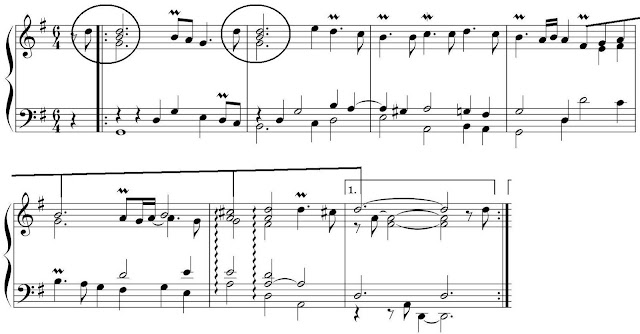The gigue gives more attention to melody in the left hand than is typical of many dance-movements, including the courantes. This textural play is common in keyboard gigues throughout the seventeenth century. At (a) a clear focal note ^5 and accented notes in line down to ^3, after which at (b) the bass carries the melodic interest, as it does again at (c) and (d). The bass continues through the end of the section while the right hand at (e) brings an uncluttered octave line to the cadence. At (f) is the cadenza perfetta that we might expect where both right and left hands carry melody.
The courante is simpler: ^5 at the outset, repeated (circled notes), clean descent to ^2 by bar 4 (not marked), then a line of the sixth up to the cadence. I haven't remarked on it, but the root position D: I tucked in between the two dominants in bar 7 has occurred several times already, and we will see it again. This one is rhythmically more prominent than most, the result of the courante's characteristic hemiola (switch to 3/2 time) for the penultimate bar.

